The Lenovo Ideapad Y700 Laptop Review
by Brett Howse on February 11, 2016 8:00 AM ESTDisplay
Lenovo offers two displays in the Y700, but luckily both are IPS panels. Several low cost gaming laptops are still shipping with TN panels as the base offering, and that’s very unfortunate in 2016, so it’s great to see Lenovo offering IPS on all of the models. The display panel in the Y700 review unit is an LGD04A7, which is the 1920x1080 offering. This is a 6-bit panel, so it's still a lower-end IPS offering, and utilizes a full RGB stripe.
Since this laptop has Optimus, there is no option of G-SYNC on this panel, since G-SYNC is only possible if Optimus is not available. This is something I hope NVIDIA can solve, because the laptops that are more often going to benefit from G-SYNC are the same laptops with the less powerful GPUs like this model. Due to the way that Optimus works though, it may be very difficult to get this to function.
To test display accuracy, we use SpectraCal’s CalMAN 5 suite with a custom workflow. Contrast and brightness levels are measured with an X-Rite i1Display Pro colorimeter, and color accuracy is measured with an X-Rite i1Pro2 spectrophotometer. As a refresher, color accuracy is measured as a Delta-E, which is the “distance” between the correct color and the color portrayed on the display. Values under 1.0 are considered imperceptible, with values under 3.0 as what we would consider acceptable.
Brightness and Contrast
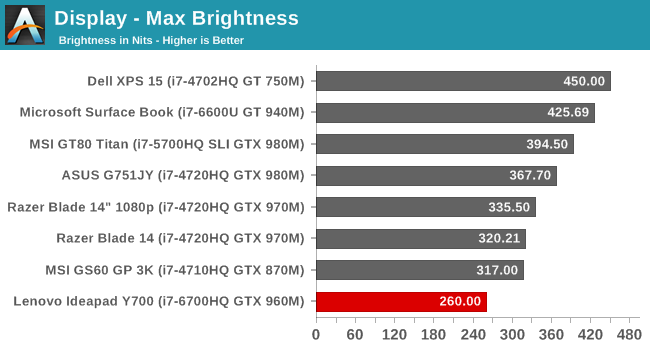
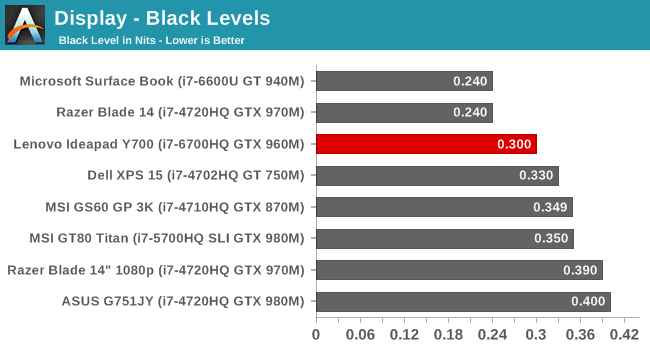

The Lenovo Y700 has a display that is not very bright. 260 nits is enough for indoor use, but if you were to use it outdoors it would be a struggle. It also has only an average contrast ratio for an IPS panel. There have been some nice advances in LCD contrast in the last little bit, but they seem to be relegated to higher end devices like the Surface Book for the time being.
Grayscale
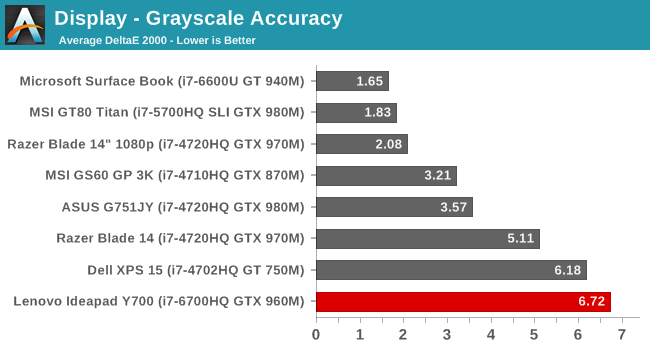
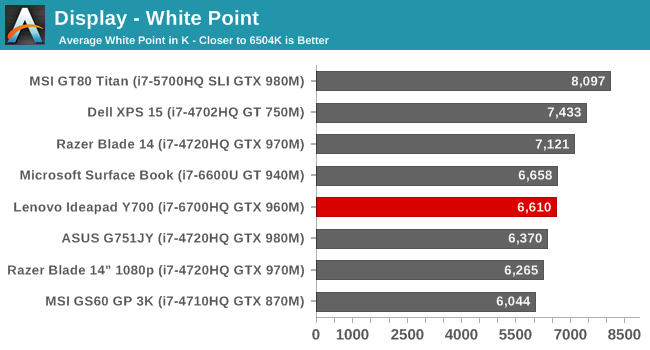
Here we start to see some issues with the Y700 display. At a targeted 200 nits, the Y700’s display has a pretty large drop off in both red and blue levels, causing the white levels to shift into the green spectrum. Amazingly the white shows as close to the target temperature of 6504K despite the color issues, highlighting the issues of using a single number to try to portray something with color.
Gamut
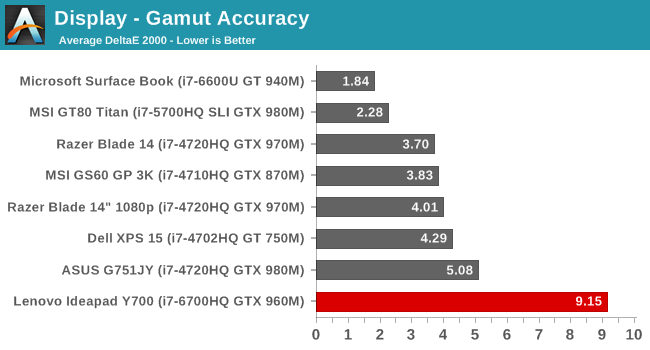
Normally I don’t bother with Gamut graphs, but on the Y700 its worth taking a look at. On this test we can see the glaringly obvious issue of the backlight used in the Y700. This is a narrow-band LED backlight, and it can’t produce anywhere near the entire sRGB gamut. The blue levels are well under what is necessary to cover the entire range, and red and green are also well under. This doesn’t bode well for the rest of the tests.
Saturation

With the saturation sweep you can more easily see the compressed nature of the narrow-band backlight. All of the colors are well under what they should be for any given point in the color space, with 100% blue topping out on the green side of about 75% of the range. This hurts magenta quite a bit, as does the red which tops out around 78% or so.
Gretag Macbeth

Our most comprehensive color test is the Gretag Macbeth test, which targets many more colors, including a lot of flesh tones. Although the overall average is about a dE of 6, there are large gaps in the results where its not even close.
Color Checker
To put the above numbers into a context that’s easier to understand at a glance, we use the Color Checker tests. The bottom of the color swatch is the correct color, and the top half shows what the display produced. Just as a reminder, the color checker results are a relative comparison, because any inaccuracies in your own display will skew the results.
On the grayscale swatches, you can clearly see the green coming out of the whites from quite early on. The color swatches make it very obvious in the shortcomings especially for blue. 100% blue on this display is far too light, and it’s very easy to see by eye.
Calibrated Results
We can use CalMAN to run a calibration of the display, but bear in mind that calibration on a display without an adjustable 3D Look Up Table (LUT) is not going to be able to do anything with the actual colors. Grayscale can be fixed, and sometimes this can pull some of the colors back a bit too, but sometimes it also hurts the color accuracy.
Once calibrated, the grayscale is much better behaved, but 100% white is not fixable because the display runs out of gamut. But as expected, the saturation and gamut results are basically unchanged. GMB does come down a bit due to the more accurate gray levels.
Overall this is a pretty disappointing display. It’s great that it is an IPS panel, so you don’t suffer from the terrible viewing angles of TN, but the backlight in the Y700 just can’t cut it. I wasn’t surprised that the display wasn’t calibrated at the factory when they are targeting this price point, but it would be great if it could come a bit closer to hitting more of the already small sRGB color space.


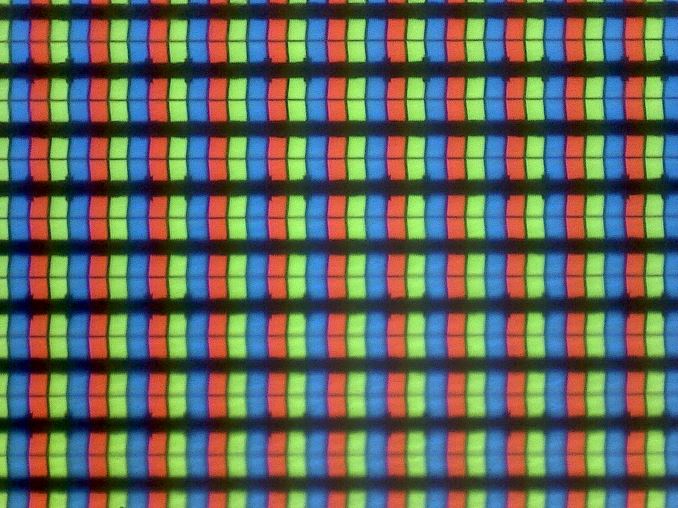
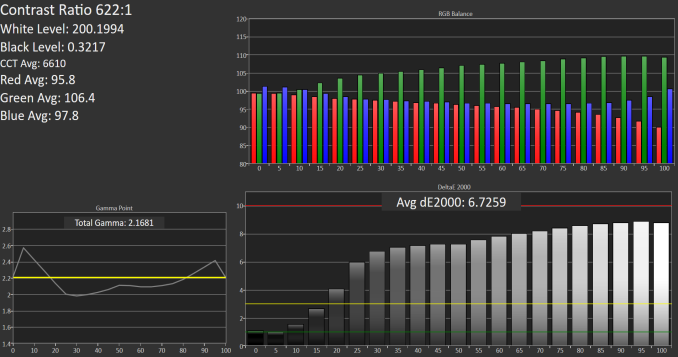
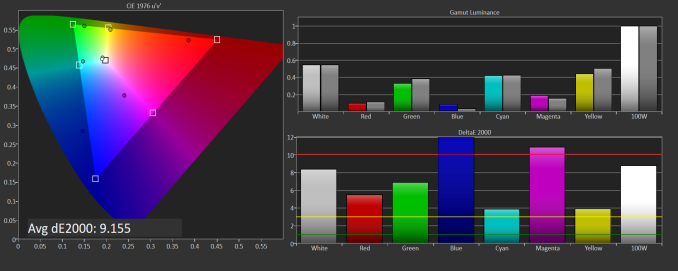
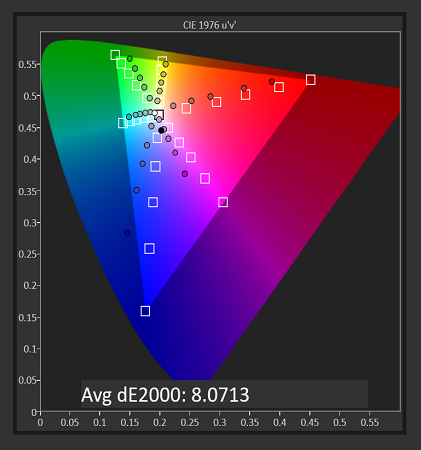



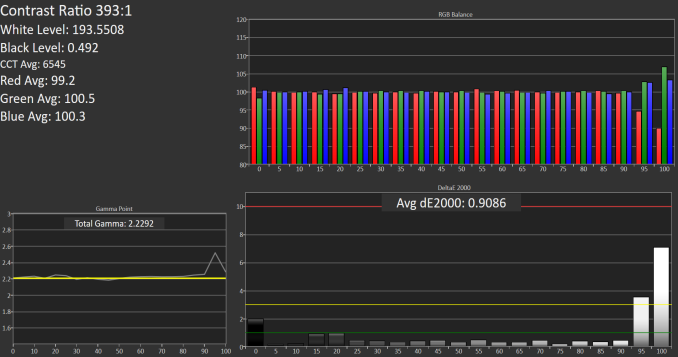
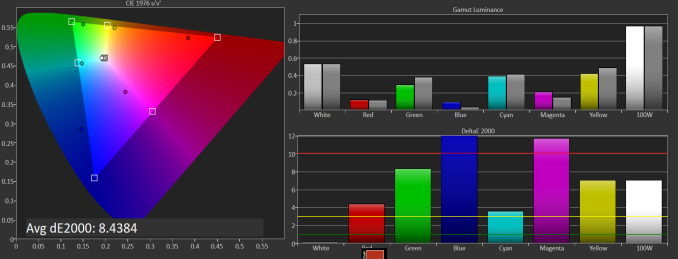
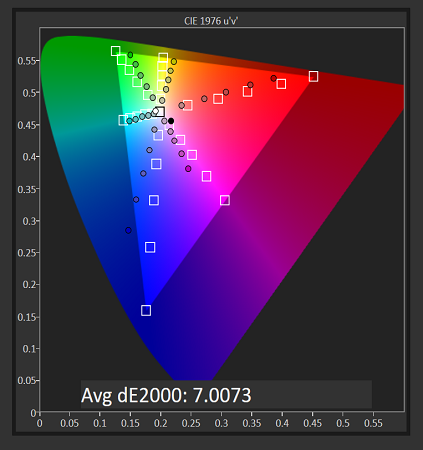
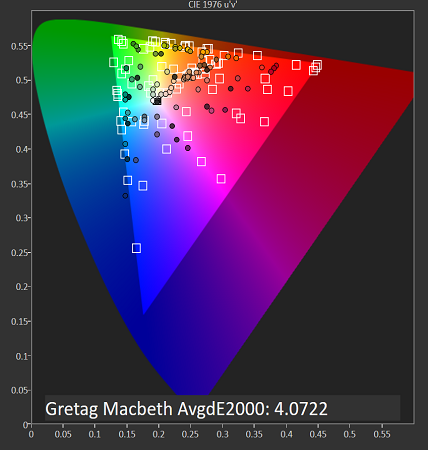








52 Comments
View All Comments
watzupken - Thursday, February 11, 2016 - link
I am not sure if aluminium is a good material to have at the base of the laptop since its a good conductor of heat and can get quite hot at the bottom. Although its not likely anyone will put it on their lap when gaming, but still not a wise choice of material from my opinion.Also, I think it will be good to know if we can open the base of the laptop to service and to know what components can be upgraded.
willis936 - Thursday, February 11, 2016 - link
Someone better alert Apple and Dell that they're using the wrong material for the chassis of their top selling laptops.jabber - Thursday, February 11, 2016 - link
yeah as long as the heat is going into the chassis and not staying in the GPU, I'm fine with that.As intended...
ImSpartacus - Friday, February 12, 2016 - link
Yep, it's one more way to get a modest bump in cooling. That's good in my book.milkod2001 - Thursday, February 11, 2016 - link
Yeah, aluminium is bad!They should have gone with plastic instead to keep laptop cool. What they were thinking! LOLATC9001 - Thursday, February 11, 2016 - link
If a laptop has aluminum on the bottom, it would likely be cooler. This is because the heat would be dissipated quickly across the entire bottom of the laptop (huge surface area). Whereas plastic would insulate the heat and any localized hot spot would heat up at the specific point and be difficult to dissipate that heat.Samus - Thursday, February 11, 2016 - link
Exactly, plastic is an insulator, creating hot spots. Which are bad for everybody and everything involved.The only debatably superior material for the bottom chassis would be magnesium, which has similar cooling performance to aluminum while being slightly lighter and stronger...and more expensive. This is, after all, a $900 machine with a fairly high end graphics card. Sure there are laptops in this price range with magnesium construction but they also lack a $200 dedicated graphics card.
I'm surprised Lenovo used aluminum at this price. The previous Y series were mostly plastic, with questionable long term GPU reliability.
Solandri - Monday, February 15, 2016 - link
Plastic or aluminum for the bottom is mostly irrelevant. The internal components aren't connected directly to the bottom. There's a thick layer of air in between, and air is a much better insulator than, well, just about anything except vacuum. Consequently, the vast majority of cooling comes from the fans venting the interior air outside. For any heat to dissipate through the bottom case material, it has to first transfer through the air, which is an almost negligible amount.All the base needs is sufficient ventilation holes so this airflow from the fans is unimpeded. That's actually why the Macbook Pro 15 has heating problems despite using a 37W TDP CPU (the lowest power quad core Intel makes). Apple refuses to put ventilation holes in the bottom.
If you *did* attach internal components directly to the bottom, then you would want it to be plastic. Aluminum or magnesium would conduct heat so readily it'd act like a big heatsink and become too hot to actually place on your lap. Plastic would insulate your lap from the heat, thus assuring most of the heat is dissipated out via the fans.
Souka - Thursday, February 11, 2016 - link
Maybe you should read the article? Thermals were good."The results are excellent. The Y700 had no issues keeping up with the demand of the CPU and GPU, and GPU temperatures never even got over 65°C. The laptop itself was barely warm after this too, so Lenovo has packed in plenty of cooling to ensure that the system can maintain peak performance for as long as necessary."
The_AC - Friday, February 12, 2016 - link
Yeah, insulators keep computers cold. This is why I put Styrofoam blocks on my CPUs, rather than crappy copper.